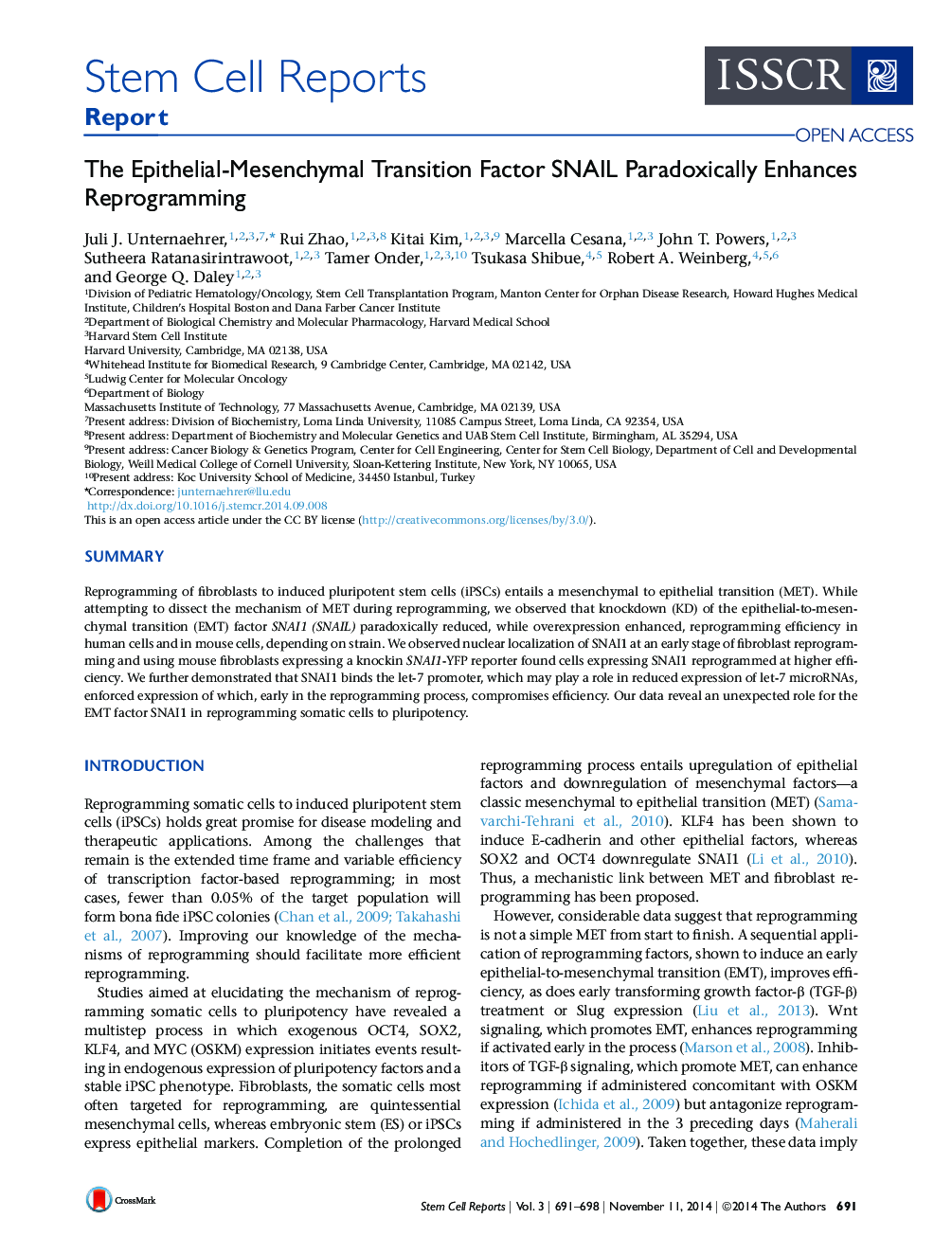| کد مقاله | کد نشریه | سال انتشار | مقاله انگلیسی | نسخه تمام متن |
|---|---|---|---|---|
| 2093319 | 1081953 | 2014 | 8 صفحه PDF | دانلود رایگان |

• Knockdown of SNAIL reduces and overexpression enhances reprogramming
• SNAIL-YFP-positive fractions reprogram at higher efficiency
• Let-7 decreases early in reprogramming, and expression of SNAIL reduces let-7
• SNAIL binds to the promoters of let-7 family members during reprogramming
SummaryReprogramming of fibroblasts to induced pluripotent stem cells (iPSCs) entails a mesenchymal to epithelial transition (MET). While attempting to dissect the mechanism of MET during reprogramming, we observed that knockdown (KD) of the epithelial-to-mesenchymal transition (EMT) factor SNAI1 (SNAIL) paradoxically reduced, while overexpression enhanced, reprogramming efficiency in human cells and in mouse cells, depending on strain. We observed nuclear localization of SNAI1 at an early stage of fibroblast reprogramming and using mouse fibroblasts expressing a knockin SNAI1-YFP reporter found cells expressing SNAI1 reprogrammed at higher efficiency. We further demonstrated that SNAI1 binds the let-7 promoter, which may play a role in reduced expression of let-7 microRNAs, enforced expression of which, early in the reprogramming process, compromises efficiency. Our data reveal an unexpected role for the EMT factor SNAI1 in reprogramming somatic cells to pluripotency.
Journal: - Volume 3, Issue 5, 11 November 2014, Pages 691–698